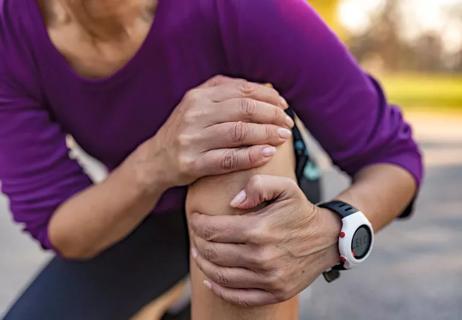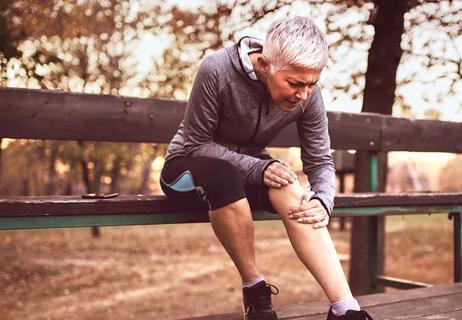Consider these common reasons for knee pain

Whether you’re walking, running, skiing, golfing, going up stairs or simply standing up, your knees do important work.
Advertisement
Cleveland Clinic is a non-profit academic medical center. Advertising on our site helps support our mission. We do not endorse non-Cleveland Clinic products or services. Policy
Sometimes that work leads to pain. As you age, and as you put strain on your knees through physical activity, knee pain becomes common.
Rest, ice, compression and elevation is a good a starting point for easing minor aches and pains. But to get the relief you need for persistent pain, your doctors have to identify the right cause. Here are a few of the factors that go into diagnosing knee pain.
The hunt for the cause of knee pain is like the search for a home: Location matters.
For example, pain below your kneecap might be a sign of patellar tendinitis, or inflammation in the tendon that connects the kneecap to the shinbone, says rheumatologist Scott Burg, DO. Pain above the kneecap often means quadriceps tendinitis.
Pain on the inside or outside of your knee could be a sign of a torn ligament (the medial collateral ligament on the inside, or lateral collateral ligament on the outside), Dr. Burg says. But it also could indicate a torn or degenerative meniscus, which is the cartilage that lines and cushions your knee joint.
Those are just a couple of causes, not including various types of arthritis. “Location is important, but we also ask other questions,” Dr. Burg explains.
For instance, does walking up or down a flight of stairs trigger pain behind your kneecap? That could be a sign of osteoarthritis. With osteoarthritis, pain also tends to get worse over the day as you’re more active.
Advertisement
On the other hand, pain that starts strong in the morning and gets better as you move during the day sounds more like an inflammatory condition, such as rheumatoid arthritis.
If you are seeing a doctor, make note of all of this. The smallest details — even the resting positions that bring you the most relief — will help in finding the right diagnosis.
“I know, it’s a tough question sometimes,” Dr. Burg says. “But you probably can tell the difference between a dull, throbbing pain and a sharp, burning sensation.”
That’s important. A sharp, burning (some say “knifelike”) sensation more often indicates an irritated nerve rather than a joint or ligament problem. On the other hand, you might describe pain from arthritis as more constant and achy.
Or really, “Is anything strange happening beyond your knee pain?”
For example, can you still flex your knee all the way? Most people get frightened when their knee locks and can’t straighten anymore. Often the culprit is called Baker’s cyst, a fluid-filled sac behind the knee caused by inflammation.
A clicking sound also triggers concern for many people. Nobody wants to hear a click with every step. “Sometimes, it’s harmless, but if that clicking comes with pain, you might have a mechanical problem such as a torn meniscus,” Dr. Burg says.
These are just a few examples among many. The knee is a complicated — and critical — part of your everyday life. So when you have pain that comes with serious symptoms or lasts for more than a week or two, seek the right diagnosis by getting a physical exam and any necessary imaging that comes with it.
Advertisement
Learn more about our editorial process.
Advertisement

Your knees could be hurting at bedtime because of inflammation, injury or some other condition that gets worse with pressure and positioning

Arthritic knees can benefit from bridging, mini squats, balancing exercises and other stretches

Work on building strength and flexibility to keep the joints moving

Don't let these aches and pains set you back

Understanding your options

Hanging upside down for any length of time may decompress the tension in your spine

Stretches, exercises and posture changes can help address lower cross syndrome

These creams that you apply to your skin can actually help reduce localized pain, swelling and inflammation

Babies can get congested easily, but you can calm their cough by keeping them hydrated, using nasal drops and running a humidifier

Weight loss may cause loose, sagging skin and muscle loss to your rear

Several conditions, like vitiligo and fungal infection, can cause a loss of pigmentation, leading to white spots or patches on your skin